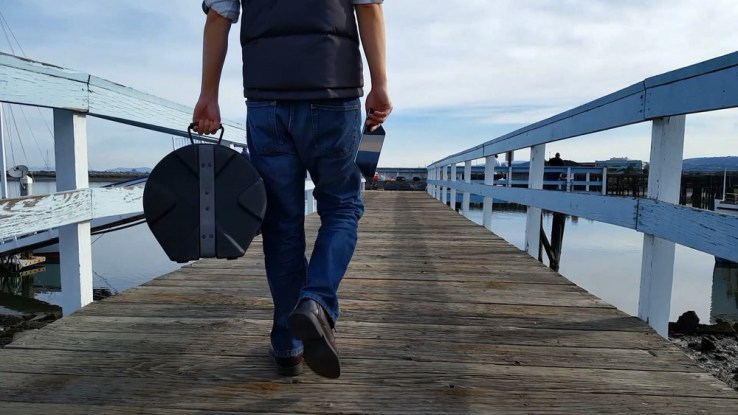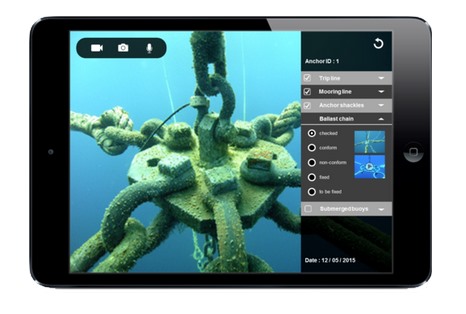
It’s the year, or perhaps the decade, of the drone, and the popular craft are only getting cheaper, better and easier to control. But why should drones be limited to the air? The SeaDrone, demonstrated onstage at Disrupt NY today, brings the benefits and simplicity of multi-rotor airborne drones to underwater applications.
“You could consider it an underwater quadcopter,” Eduardo Moreno, co-founder of O-Robotix, told TechCrunch. “It’s not made like a missile, like other underwater drones. It’s designed to stabilize itself. We focused on innovating on how a robot could capture very stable footage.”
The craft may borrow its overall style from popular aerial drones, but the turbines are the company’s own bespoke design. They’re smaller, lighter, simpler, cheaper and more durable than off-the-shelf models, dropping the cost of the device immensely while also improving its maneuverability.
It also means the whole thing fits in a case you can put in the passenger seat. That’s a big plus.

The SeaDrone is controlled with a tablet app, and the craft itself runs a custom Linux install — eschewing the “very analog” control schemes of most remote-operated underwater vehicles. The onboard OS also allows for programmable motions — for instance, automated inspection of nets or thorough, 360-degree video captures of the surroundings.
Although it does sound like it would be fun to pilot, the SeaDrone is made with work in mind — specifically, maritime and sea-based farming applications.
“Currently we’re focusing on aquaculture, because they’re the ones that require the most frequent dives,” Moreno said. Inspecting boats, docks, nets, pipelines — many of these tasks require large, expensive ROVs or trained divers. The SeaDrone can do many of these tasks for a fraction of the cost, and can be operated by non-specialists.
On top of the drone itself, O-Robotix will be selling a platform for storing and organizing the data it collects. Management of fish and hatcheries and other things involves lots of reports and note-taking — regulatory agencies want to know all kinds of things, and the process is tedious.

“Instead of writing notes and doing things on paper, and collecting photos and videos as they go along, we automatically grab all that information and format it for the manager to submit,” Moreno said. This would provide income on top of the usual sales, parts and repairs of the SeaDrone fleet.
Until now the company has been largely bootstrapped, but is entering the manufacturing phase, which requires a bit more capital. Hardware companies are notoriously difficult to get off the ground, but O-Robotix looks poised to take a pretty big slice of an under-attended global industry.

